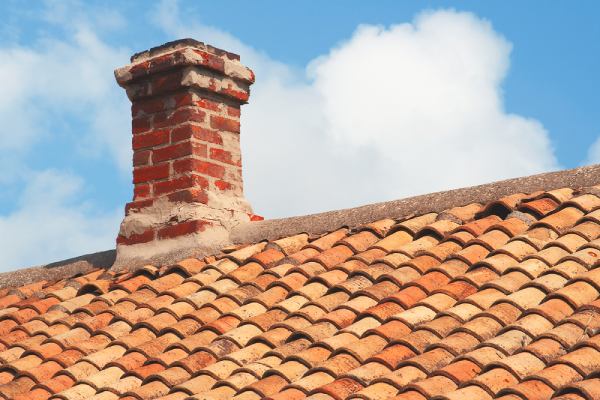If your house has a strong odor of creosote, it could be due to a number of reasons. Creosote is a dark, oily substance that is produced when wood is burned incompletely, and it has a strong, pungent smell. Here are a few common sources of creosote odors in homes:
- Chimney: If you have a fireplace or a wood-burning stove, creosote can build up in your chimney over time. If you burn a lot of wet or resinous wood, the creosote deposits in your chimney can become substantial and create a strong odor.
- Wood-burning appliances: If you have a wood-burning furnace or boiler, creosote can accumulate in the appliance’s combustion chamber or flue. Over time, the creosote can become a source of odor and a fire hazard.
- Contaminated air ducts: If your home has a forced-air heating system, creosote or other combustion byproducts can sometimes become trapped in the ductwork. This can lead to an odor that permeates the entire house.
If you believe the creosote odor in your home is coming from one of these sources, it’s important to address the issue promptly to minimize any potential risks to your health or the safety of your home. A professional chimney sweep or heating contractor can assess the situation and recommend the appropriate course of action.
What is creosote in fireplace?
Creosote is a sticky, tar-like substance that forms when wood is burned in a fireplace, wood stove, or chimney. As wood burns, the gases produced by the combustion process rise up the chimney and condense on the inside surface. Over time, these condensed gases can form a thick, dark layer of creosote on the chimney walls.
Creosote is highly flammable and can pose a serious fire hazard if it builds up in your chimney. In addition, it can produce a strong, unpleasant odor that can permeate your home. It is important to regularly clean and maintain your chimney to prevent the buildup of creosote and to minimize the risk of fire. A professional chimney sweep can help you assess the amount of creosote in your chimney and clean it if necessary.
Does creosote smell like burning plastic?
Creosote has a distinctive, pungent odor that is often described as being similar to that of burning wood or coal. While it can sometimes have a slightly chemical or acrid scent, it does not typically smell like burning plastic.
It’s possible that if you’re experiencing an odor that resembles burning plastic in your fireplace or chimney, there could be a different issue at play, such as a buildup of soot or an accumulation of debris. In some cases, it may even be an indication of a more serious problem, such as a chimney fire or a malfunctioning appliance.
Is creosote toxic to breathe?
Breathing in creosote fumes can be harmful to your health and can cause a range of symptoms, depending on the concentration and duration of exposure.
Creosote is a complex mixture of chemicals that can contain toxic compounds such as polycyclic aromatic hydrocarbons (PAHs), phenols, and other irritants. Prolonged exposure to creosote fumes can irritate the eyes, nose, and throat, and cause headaches, dizziness, and nausea. In severe cases, it can cause lung damage, kidney and liver problems, and an increased risk of certain types of cancer.
It’s important to minimize your exposure to creosote fumes, especially if you have a fireplace, wood stove, or chimney in your home. Regular chimney maintenance and cleaning can help prevent the buildup of creosote, and using proper ventilation can help reduce the amount of fumes that enter your home.
What gets rid of creosote smell?
If your home has a strong odor of creosote, there are several steps you can take to eliminate the smell:
- Clean your chimney: If the source of the odor is a buildup of creosote in your chimney, the best way to get rid of the smell is to clean the chimney. A professional chimney sweep can assess the situation and remove the creosote deposits, which should eliminate the odor.
- Ventilate your home: Increasing ventilation can help dilute the concentration of creosote fumes and reduce the odor. Open windows, run fans, and use air purifiers to improve air flow and remove the odor.
- Use odor-absorbing products: Activated charcoal, baking soda, and other odor-absorbing products can be effective in neutralizing creosote odors. Place bowls of these products around your home, especially in areas where the odor is strongest.
- Try essential oils: Essential oils, such as lemon, lavender, and tea tree, have natural deodorizing properties that can help eliminate creosote odors. Mix a few drops of essential oil with water in a spray bottle, and spray the solution around your home to help neutralize the odor.
- Clean affected surfaces: If the creosote odor has permeated surfaces in your home, such as walls, furniture, or carpets, you may need to clean these surfaces to get rid of the smell. A mixture of vinegar and water can be effective for cleaning walls, while a commercial odor-eliminating spray may be necessary for other surfaces.
It’s important to address the source of the creosote odor, rather than just trying to mask it with air fresheners or other products. Regular chimney maintenance and cleaning can help prevent the buildup of creosote and minimize the risk of odors in the future.
Why Creosote Smells Like Mothballs

Creosote and mothballs can have a similar odor because they both contain pyridine, which is a type of organic compound that has a strong, musty odor. However, the similarity in odor between creosote and mothballs is not due to creosote itself, but rather to the presence of mothballs in the chimney.
Mothballs can sometimes be used to control pests in chimneys or to prevent the growth of mold and mildew, but they can also contribute to the buildup of creosote in the chimney. When mothballs are burned in a wood stove or fireplace, they can release pyridine and other chemicals that can combine with the fumes produced by the burning wood to form creosote. Over time, this creosote can build up on the inside of the chimney, creating a fire hazard and emitting a strong, musty odor that is similar to that of mothballs.







